In 1989, the staff of The Hornet newspaper and their adviser, Julie Davey, were on a red-eye flight to New York City. They were finalists for one of the highest awards of college journalism in America–the Columbia University Gold Crown Award. Nerves and excitement coursed through them. The Hornet staffers didn’t think they, a small community college, had a chance of winning against Ivy League schools. They showed up to the ceremony in sweaters and t-shirts and were intimidated when they saw everyone else in blazers and suits. When it finally came time to announce the winners to the crowd of students from all across the country, The Hornet staff jumped for joy to see that they had won the Gold Crown award and accomplished what seemed to them as impossible. Moments like this have helped shape the award-winning Fullerton College journalism program into what it is today.
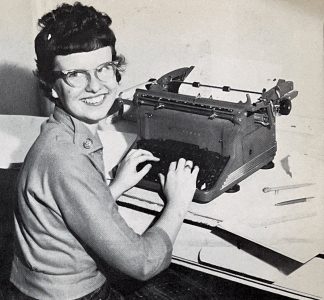
The journalism program is celebrating its 100 year anniversary in the fall 2022 semester. It’s the first and longest running collegiate journalism program in Orange County and one of the oldest in the state. It began in 1922 as a college yearbook but has transformed into a bilingual program with three different publications, a radio station and a drone lab. The program survived staff shortages, shifts to the digital world and even a pandemic but still has received numerous awards throughout its existence for stories covering students, faculty and the community.
The Annual Torch, Fullerton College’s first yearbook, debuted in 1922, but it wasn’t until Jan. 12, 1923, when The Weekly Torch, Fullerton College’s student newspaper, first hit newsstands on campus. It was not formal to begin with. The first issue was one page long and provided weekly updates about clubs and events. As time went on, it developed in length and featured sections such as jokes, personals, society columns and short poems.
In 1954, the newspaper’s name changed to The Hornet after a poll was conducted by the program. Then, in 1965, the school’s yearbook evolved into the student magazine, known as The Torch.
Eventually in 2017, The Torch underwent a name change. In the past, the magazine had short-lived name changes including FC Magazine, Fullerton College Magazine and even X. This time, it was different. In 2002, a former student of journalism department coordinator Jay Seidel’s, Morgan McLaughlin, started the hyperlocal news publication Inside Fullerton, which had a robust calendar section and covered local events. McLaughlin ran it for a few years but handed it to Seidel in 2016. He decided to combine it with the school’s magazine and from then, the magazine was no longer The Torch, but became Inside Fullerton.
In the 18 years that Davey was adviser to The Hornet, the program scored big with awards. After their 1989 win from the Columbia University Scholastic Press Association, they were finalists for the Gold Crown Award again in 1995. Freelance graphic designer Vincent Williams, who attended Fullerton College in 1986, also won two individual awards from Columbia University for his illustrations featured in The Hornet. One of them was for an illustration of Charlie Chaplin in fear of a paint brush with red paint in an editorial piece about making old black-and-white movies into color. He says this moment was “totally unexpected.”
“Basically, I thought I had the best students,” says Davey. “It was like having the best team for the World Series or the Super Bowl.”
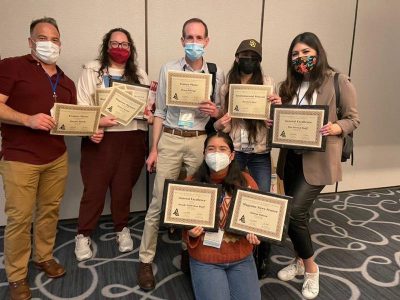
Between the years of 2005 through 2013, The Torch were finalists for the Pacemaker award by the Associated Collegiate Press Association. The program has also won a variety of other awards for design, photography and writing. To this day, The Hornet and Inside Fullerton continue to bring home a handful of awards from the Journalism Association of Community Colleges every semester.
Actor and former editor-in-chief of The Hornet Errik T. Williams attended Fullerton College from 1990 to 1995. He has great memories about the care the advisers showed to their students at the time.
While Williams was on staff, the newspaper ran ads for Giovanni’s Pizza, a local restaurant. However, the restaurant paid for the advertisement with pizza, not money. “What we would do on Thursday at lunchtime—this was a big rule for Julie—we would all stop, go right outside the doors of The Hornet and eat the pizza,” recalls Williams. “It was like a family dinner, and it was something we did every week.”
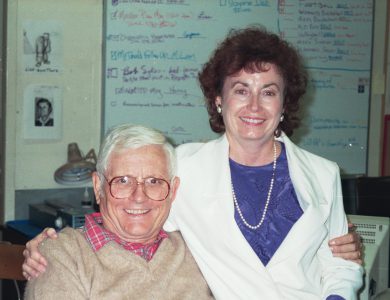
Vivianne Wightman and Mike Cruz, both former editors of The Hornet, worked with advisers Davey and Larry Taylor.
“Larry was wonderful. I absolutely adored him, we all did,” says Wightman. “He and Julie were the perfect blend.”
Not only was Wightman part of the journalism program, so was her grandmother, Violet Wightman. Violet Wightman was 91 years old when she signed up for Davey’s freelance writing class. She had a passion for playing the piano and went to school to work on her other passion for writing and storytelling. She attended class from 1992 to 1997. Shortly before she passed away in December 1998, a book of Violet Wightman’s poems titled “Sitting on a Cloud” was published by the Fullerton College print department.
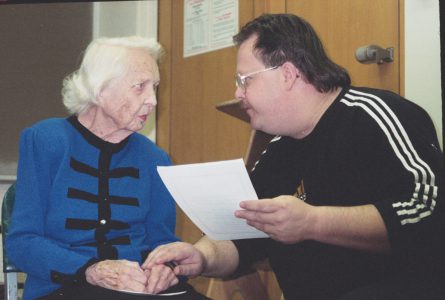
In 2010 Seidel started the Spanish-language publication La Antorcha, which later rebranded to Antorcha del Sur, with hopes of it becoming a regular course. At one point Antorcha del Sur had more students than The Hornet, leading it to officially become a publication in 2011 and making Fullerton College the first and only community college in California to have a Spanish publication class.
Since the start of this class, in 2018 it became the first and only time Fullerton College offered a Spanish language reporting as a dual enrollment class at Anaheim High School when they created their own Spanish language newspaper.
As Antorcha del Sur continued at Fullerton College, enrollment declined and the course has not been offered since spring 2020.
Joanna Jacobo Rivera, a former journalism professor at Fullerton College from 2019 to 2021 taught introduction courses, Spanish-language reporting and magazine writing.
In spring 2021, Inside Fullerton published English and Spanish stories within the magazine under Jocabo Rivera and former editor-in-chief Salina Falcon.
However, Jacobo Rivera says, “It’s very bittersweet, I want to feel really great about it but I don’t.” Jacobo Rivera explains that they should have always been in the magazine. “It’s not that there aren’t students of color or students that identify as Latinx, but this goes back, it’s that lack of diversity in leadership,” she says.
Under the supervision of Seidel, Fullerton College had an unofficial partnership with Telemundo and internship spots would be filled with one Spanish language media student for their digital side. This led to some students over the years to go on to work in the Telemundo Network.
Seidel began teaching at Fullerton College in 2001. He was a staffer on The Hornet and the magazine when Davey was adviser. She suggested that he come back to the school to teach and advise The Hornet. Ever since then, he was hooked. “Fullerton College is actually near and dear to my heart. This would be the only place I would teach full time,” he says.
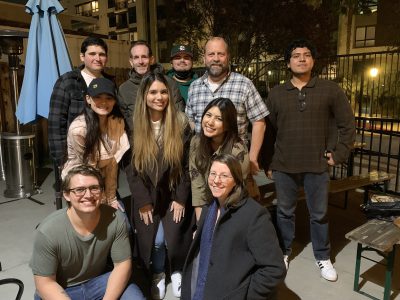
In 2016, The Hornet went completely online after Seidel and his staff noticed a large amount of newspapers needing to be recycled rather than being picked up by readers. “It was one of those things where it’s like, ‘Why are we doing this? Let’s move to a digital focus,’” he says. “That way, we retrain our students on what they’re going to need to know for the future rather than bring a print newspaper no one cares about.”
Around this same time, Seidel became intrigued with combining drones and journalism after seeing it online. He attended training at the University of Oregon and came back to Fullerton to start a class on it. This later developed into the Fullerton Drone Lab.
In 2022, the Fullerton College journalism program expanded. The radio program that includes the low-power FM licensed station KPBK that is celebrating their 50th anniversary was adopted into the journalism program.
Jessica Langlois is currently an assistant professor of Journalism at Fullerton College and adviser to The Hornet and Inside Fullerton. She started in the fall of 2019 and has taught a handful of classes. When it comes to the future of the journalism program, Langlois would love to see more fellowship and grant opportunities for students, allowing them to partake in more in-depth reporting. Alongside that, she mentions she would like to see more reporting on tough issues, more accountability reporting and data projects.
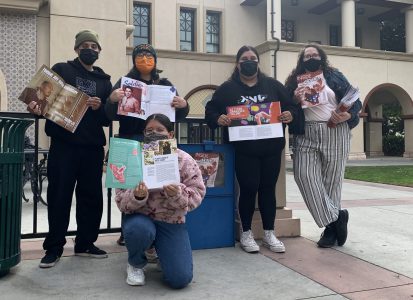
In the beginning of her journalism journey, she says she made mistakes and only got better from there. Langlois’ advice to anyone who wants to give journalism a go and may be too nervous or scared is this: “You don’t have to be a writer, a photographer, a video maker… You will become those things. It’s all a process of learning as you go. Don’t feel like you have to be perfect… Stick with it, and you’ll get to the place that you want to be.”
